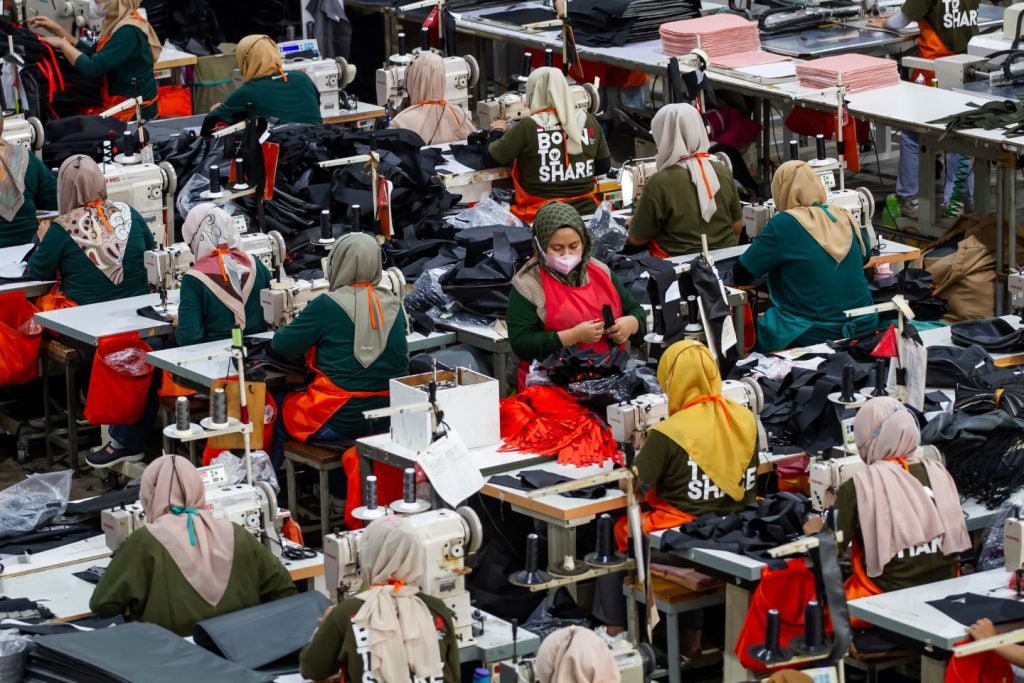
The pilot version of the Materials Impact Explorer, previously known as the Global Fibre Impact Explorer, was initially developed in 2021 through a collaborative effort involving Google, WWF, and Textile Exchange.
The tool, unveiled at the Textile Exchange Conference taking place from 23-27 October 2023, has undergone refinement in partnership with industry and environmental experts, including organisations like Risilience, WWF, and The Biodiversity Consultancy.
The MIE’s initial release focuses on assessing risks in three core categories: Climate, Freshwater, and Biodiversity, with plans to incorporate Forests and Air Pollution in the next phase of development.
The updated Materials Impact Explorer was launched at the Textile Exchange Conference in London and aims to facilitate a better understanding of the environmental challenges and opportunities related to raw material sourcing.
The functionalities and features of the Materials Impact Explorer:
- The tool employs over 160 data sets, including information from Google Earth Engine (covering aspects such as vegetation cover and water surface volume changes), The World Bank, The World Health Organization, Quantis WALDB, and the Integrated Biodiversity Assessment Tool (IBAT) to evaluate environmental risks across various impact areas.
- The tool provides risk ratings and recommendations tailored to individual brands based on their sourcing portfolios.
- The tool aligns with the Taskforce on Nature-related Financial Disclosures (TNFD) and Science Based Targets for Nature frameworks, making it a valuable asset for companies adhering to these guidelines.
- This tool offers support to brands in understanding the environmental risks associated with the country of origin of their raw materials.
- The Materials Impact Explorer assists in developing strategies and mitigation plans to reduce sourcing-related risks and environmental impacts.
Textile Exchange said the Materials Impact Explorer stands out as the “first open-source, industry-specific sourcing tool” that focuses on the environmental risk at the fibre’s country of origin, in alignment with the principles of the Taskforce on Nature-related Financial Disclosures and Science Based Targets for Nature.
How well do you really know your competitors?
Access the most comprehensive Company Profiles on the market, powered by GlobalData. Save hours of research. Gain competitive edge.

Thank you!
Your download email will arrive shortly
Not ready to buy yet? Download a free sample
We are confident about the unique quality of our Company Profiles. However, we want you to make the most beneficial decision for your business, so we offer a free sample that you can download by submitting the below form
By GlobalDataThe fashion industry is said to be responsible for a significant portion of global carbon emissions, with approximately 24% attributed to the production of raw materials.
Fashion brands are now showing a growing interest in comprehending the risks associated with their sourcing decisions and exploring opportunities to collaborate with communities to address these risks.
Prominent brands such as H&M Group, Stella McCartney, and Reformation have been early adopters, reviewing and piloting the updated Materials Impact Explorer.
Key stakeholders in this project express their support
Adam Elman, head of sustainability Europe at Google, highlighted the company’s commitment to advancing sustainable decision-making.
Nathan Eaton, executive director of NGIS said: “By harnessing geospatial data and innovative technology, NGIS aims to empower brands with the knowledge they need to make more responsible sourcing decisions, mitigating risks, and encouraging positive environmental impacts.”
Payal Luthra, global apparel & textiles lead at WWF emphasised the significance of tools like the Materials Impact Explorer in achieving conservation goals: “Sustainable sourcing of raw materials is central to meeting our global conservation goals for climate, freshwater, and biodiversity. Tools that help companies untangle complicated options, their exposure to risk, and pathways to make their supply chain more sustainable are incredibly important.”
Carrie Freiman, senior director of sustainability at Reformation, believes the Materials Impact Explorer has the potential to assist brands in assessing environmental impacts and risks in their fibre portfolios, ultimately contributing to better industry-wide sourcing decisions.
Beth Jensen, climate+ impact director at Textile Exchange, conveyed the organisation’s dedication to guiding the industry toward climate and nature goals and the tool’s potential to help companies make informed decisions in line with emerging sustainability frameworks.







